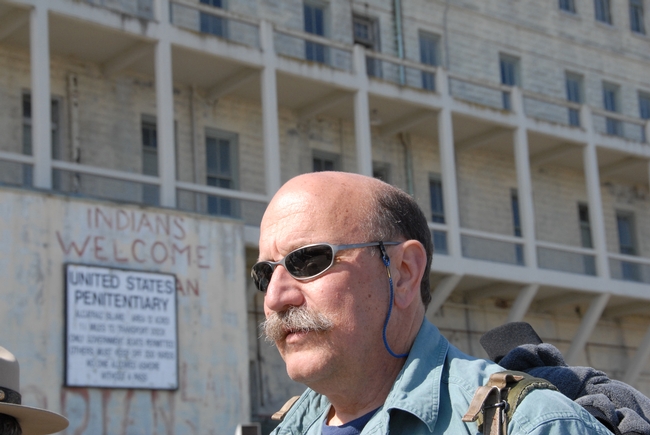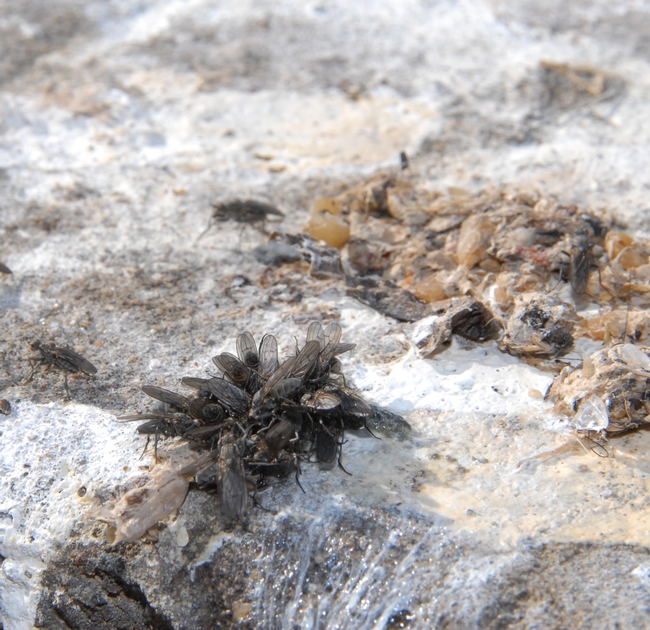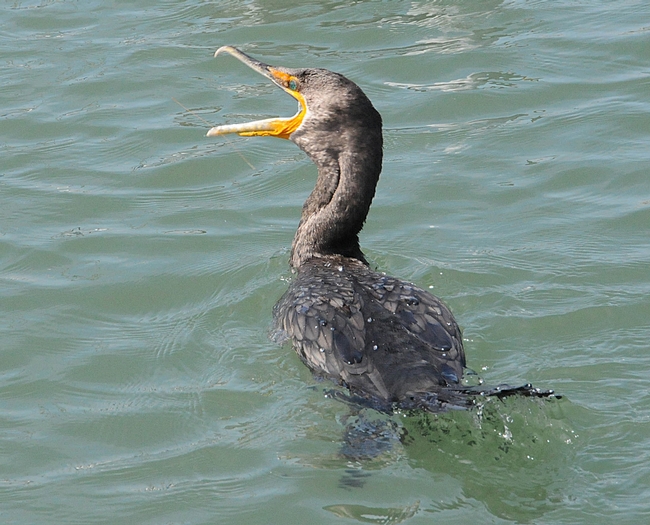- Author: Kathy Keatley Garvey
Forensic entomologist Robert Kimsey of the UC Davis Department of Entomology is known as "The Fly Man of Alcatraz."
When he's not teaching classes, advising students and graduate students, or heading out on homicide cases, you can usually find him on "The Rock"--researching flies.
Kimsey will discuss "The Flies of Alcatraz" tomorrow (Thursday, May 5) at a meeting of the Northern California Entomology Society, to be held at the Harry H. Laidlaw Jr. Honey Bee Research Facility on Bee Biology Road, UC Davis. His talk starts at 1:15.
Kimsey has walked where Al “Scarface” Capone, George “Machine Gun” Kelly, Robert “The Birdman of Alcatraz” Stroud and Arthur “Doc” Barker walked. He sleeps where "The Bird Man of Alcatraz" sleeps when his research involves overnight trips.
“One day when I was working on research until 4:30 a.m., I laid down in the cell, extremely tired,” Kimsey said. “I looked through the steel bars and saw the lights of San Francisco. I thought about how I’d feel if I had to spend a large chunk of my life in this cell. I’d certainly be very angry with myself.”
Kimsey became involved in the fly project in July 2007 when he received a call about the annoying flies from entomologist Bruce Badzik, integrated pest management coordinator with the National Park Service, Golden Gate National Recreation Area.
Complaints rose to a feverish pitch in late August, September and October. The flies seemed to land on people as if they were rotten meat. Kimsey witnessed the incessant “shoo-fly” behavior on the docks and encountered it on a personal basis.
Kimsey identified the troubling fly as a “kelp fly” (Fucillia thinobia) or “cormorant fly” in the family Anthomyiidae. “But it’s not a kelp fly as such,” said Kimsey, who plans to publish his research in an entomological journal. “It has nothing to do with kelp. It lives in purge-soaked soil under dead cormorants found in rookeries all around the island. It does not exist in any other place.”
Since then, he and Badzik have identified 17 species of flies. They are the first to research the flies of Alcatraz.
Kimsey has also become friends with many of the National Park Service employees, the former inmates and the former guards.
“Federal prisoners were sent to Alcatraz not necessarily because of the nature of their crime but of their deportment or behavior toward others in jails elsewhere,” Kimsey said. “If they fought constantly, tried to kill the guards, or tried to escape, Alcatraz was the place to send them. They were not necessarily the worst of the worst, but the most difficult.”





